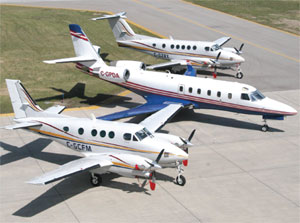
Features
Operations
Made to Measure
Investing in an airplane is less like buying a car and more like tailoring a suit. It has to fit.
October 1, 2007 By Rob Seaman
 THE DAY HAS COME when you finally decide you have had enough of flying
THE DAY HAS COME when you finally decide you have had enough of flying
on other people’s aircraft and it’s time to get one of your own. But
what aircraft is right for you and your unique travel habits? You can’t
just stroll through a dealership as if you were buying a car. This is
more like buying a welltailored suit. A good tailoring and fit will
result in something you are comfortable with and will use for a long
time.
When
purchasing an aircraft, however, you need to do more upfront work
before finalizing your purchase. Part of the challenge is knowing who
to call first and what questions to ask, as well as what to expect.
Fortunately, most aircraft sales agents are able to work through this
search with you and do all the right ‘measurements’ of your use
expectations and travel needs. And like a ‘fitting’ before the final
stitch work is done, they will also arrange demo flights so you can
test the fit and function. Said Christophe Chicandard, Bombardier
Aerospace’s sales director for Canada: “We first assist our customers
in defining and articulating their transportation needs. The right
aircraft is defined as the result of a good old-fashioned analysis of
the buyer's needs which focuses on a combination of criteria including
such items as places where the aircraft will fly from/to, range,
payload, comfort level and budget.”
In building a ‘user
profile’, you also need to consider operational management – will you
be using this aircraft exclusively for your own purposes or will you be
able to offer it for charter when not being used by your own group?
Ray
Kuliavas, vice-president of Innotech Aircraft Sales, dealer for Cessna
Citation in Canada, said that from his experience, “the most
comprehensive cost benefit analyses are conducted by first-time buyers.
Typically, the initial analysis consists of a peripheral comparison of
historical airline travel costs versus the operating costs of a company
owned aircraft. The end result is often disappointing with the company
perceiving that a corporate aircraft may be too expensive. It is at
this stage where we find ourselves to be challenged with educating the
prospect on the economic benefits of using the aircraft as a business
tool. More often than not, we are able to demonstrate to our prospects
that the corporate aircraft is not only economically viable, but as a
tool, may even increase business.”